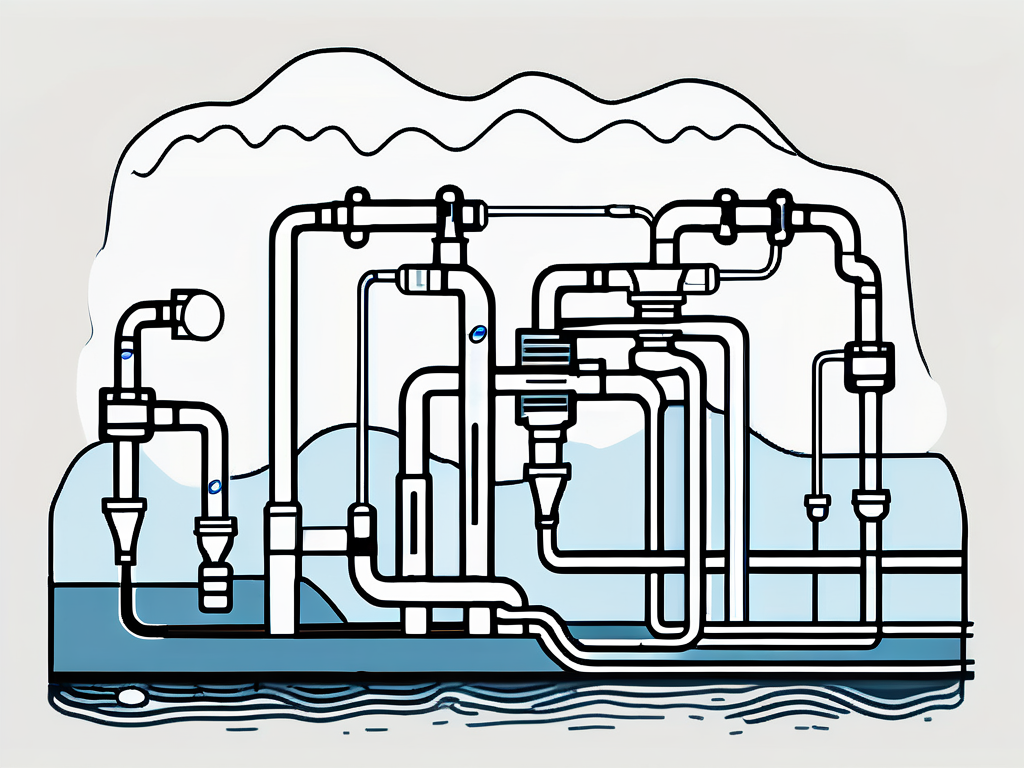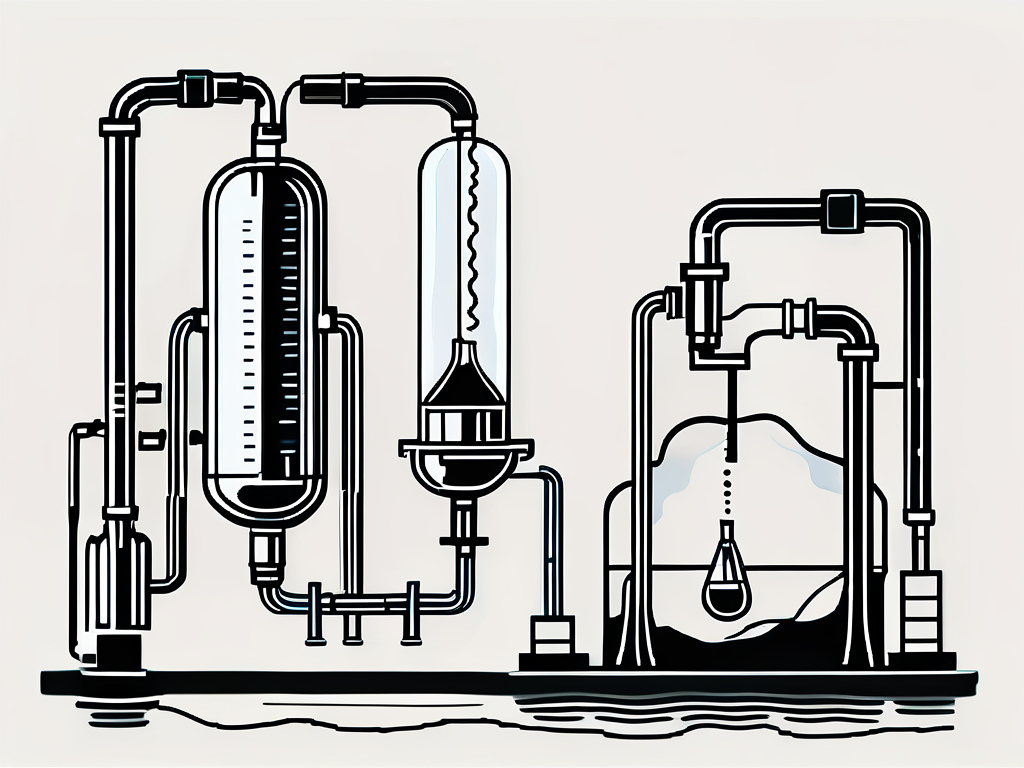
Hydraulic Retention Time: Wastewater Treatment Explained
Hydraulic Retention Time (HRT), a crucial concept in the field of wastewater treatment, refers to the calculated time that a volume of wastewater spends in a treatment tank or system. This time is critical in determining the efficiency and effectiveness of the treatment process. The longer the HRT, the more time there is for the treatment process to occur, leading to better quality treated water. However, a balance must be struck as too long an HRT can lead to other issues such as sludge build-up and increased operational costs.
The calculation of HRT is relatively straightforward. It involves dividing the volume of the tank or system by the flow rate of the wastewater entering it. However, the practical application and implications of HRT are far more complex, requiring a deep understanding of various factors such as the characteristics of the wastewater, the design of the treatment system, and the specific treatment processes involved.
Understanding Hydraulic Retention Time
The concept of Hydraulic Retention Time is rooted in the principles of fluid dynamics and mass balance. It is a measure of the average length of time that a discrete quantity of wastewater remains within a treatment system. This time is critical in determining the effectiveness of various treatment processes, as it provides an indication of the amount of contact time between the wastewater and the treatment media or agents.

For example, in a biological treatment process, the HRT determines the amount of time that the wastewater is in contact with the microorganisms that are responsible for breaking down the organic matter. If the HRT is too short, the microorganisms may not have enough time to effectively break down the organic matter, leading to poor treatment performance. On the other hand, if the HRT is too long, it can lead to excessive growth of microorganisms, which can cause problems such as sludge bulking.
Importance of HRT in Wastewater Treatment
The importance of HRT in wastewater treatment cannot be overstated. It is one of the key parameters that is used in the design and operation of wastewater treatment systems. The HRT is directly related to the size of the treatment system - a larger system will have a longer HRT, and vice versa. Therefore, the HRT is a critical factor in determining the physical footprint and capital cost of a treatment system.
Furthermore, the HRT is also a critical factor in determining the operational cost of a treatment system. A longer HRT means that the system has to process the wastewater for a longer period of time, which can increase energy consumption and other operational costs. Therefore, optimizing the HRT is a key aspect of efficient and cost-effective wastewater treatment.
Factors Influencing HRT
Several factors can influence the HRT of a wastewater treatment system. These include the flow rate of the wastewater, the volume of the treatment system, the characteristics of the wastewater, and the specific treatment processes involved. For example, a high flow rate of wastewater can reduce the HRT, while a large volume of the treatment system can increase the HRT.
The characteristics of the wastewater can also have a significant impact on the HRT. For example, wastewater with a high concentration of organic matter may require a longer HRT to ensure effective treatment. Similarly, certain treatment processes, such as biological treatment, may require a longer HRT compared to other processes, such as physical or chemical treatment.
Calculating Hydraulic Retention Time
The calculation of HRT is a relatively straightforward process. It involves dividing the volume of the treatment system by the flow rate of the wastewater. The volume of the system is usually expressed in cubic meters (m3), while the flow rate is usually expressed in cubic meters per day (m3/day). Therefore, the HRT is usually expressed in days.

However, it is important to note that this calculation provides an average HRT. In reality, the actual HRT can vary significantly due to factors such as variations in the flow rate, uneven distribution of wastewater in the system, and dead zones in the system where the wastewater is not effectively circulated. Therefore, the calculated HRT should be considered as an approximation, and actual operating conditions should be monitored to ensure effective treatment.
Example of HRT Calculation
Let's consider a simple example to illustrate the calculation of HRT. Suppose we have a wastewater treatment system with a volume of 500 m3, and the flow rate of the wastewater is 100 m3/day. The HRT of the system can be calculated as follows:
HRT = Volume / Flow rate = 500 m3 / 100 m3/day = 5 days
This means that, on average, a volume of wastewater will spend 5 days in the system. However, as mentioned earlier, the actual HRT can vary due to various factors.
Implications of HRT Calculation
The calculation of HRT has several important implications for the design and operation of wastewater treatment systems. Firstly, it provides a basis for sizing the treatment system. A system with a larger volume will have a longer HRT, which can improve treatment performance but also increase capital and operational costs.
Secondly, the HRT calculation can help in determining the operational parameters of the system, such as the loading rate and the sludge retention time. These parameters are critical in ensuring effective treatment and preventing problems such as sludge bulking and foaming.
Optimizing Hydraulic Retention Time
Optimizing the HRT is a key aspect of efficient and cost-effective wastewater treatment. This involves finding the right balance between treatment performance and cost. A longer HRT can improve treatment performance but also increase costs, while a shorter HRT can reduce costs but also compromise treatment performance.
Several strategies can be used to optimize the HRT. These include adjusting the flow rate, modifying the volume of the system, and implementing advanced treatment processes that can achieve effective treatment with a shorter HRT. The choice of strategy depends on various factors such as the characteristics of the wastewater, the specific treatment objectives, and the available resources.
Adjusting Flow Rate
One of the simplest ways to optimize the HRT is to adjust the flow rate of the wastewater. This can be done by implementing flow control measures, such as pumps and valves, or by modifying the wastewater generation process to reduce the flow rate. However, this strategy has limitations, as it may not be feasible to significantly reduce the flow rate without compromising the wastewater generation process.
Furthermore, adjusting the flow rate can have other implications for the treatment process. For example, a high flow rate can increase the hydraulic load on the system, which can lead to problems such as overflow and bypass. Therefore, this strategy should be implemented with caution and in conjunction with other strategies.
Modifying System Volume
Another strategy for optimizing the HRT is to modify the volume of the treatment system. This can be done by expanding the system or by implementing advanced treatment technologies that can achieve effective treatment with a smaller volume. However, this strategy can be costly and may require significant capital investment.
Furthermore, modifying the system volume can have other implications for the treatment process. For example, a larger system can increase the sludge production, which can increase the sludge handling and disposal costs. Therefore, this strategy should be implemented with careful consideration of the overall system performance and cost.
Implementing Advanced Treatment Processes
Implementing advanced treatment processes is another strategy for optimizing the HRT. These processes can achieve effective treatment with a shorter HRT, which can reduce the size and cost of the treatment system. Examples of advanced treatment processes include membrane bioreactors, moving bed biofilm reactors, and advanced oxidation processes.
However, these processes can be complex and may require specialized knowledge and equipment. Furthermore, they can have other implications for the treatment process, such as increased energy consumption and chemical usage. Therefore, this strategy should be implemented with careful consideration of the overall system performance and cost.
Challenges in Managing Hydraulic Retention Time
Managing the HRT in a wastewater treatment system can be challenging due to several factors. These include variations in the flow rate, uneven distribution of wastewater in the system, and dead zones in the system where the wastewater is not effectively circulated. These factors can lead to significant variations in the actual HRT, which can compromise the treatment performance.
Furthermore, managing the HRT can be complicated by the dynamic nature of the wastewater characteristics and treatment processes. For example, the concentration of organic matter in the wastewater can vary significantly over time, which can affect the required HRT. Similarly, the performance of the treatment processes can vary due to factors such as temperature, pH, and microbial activity, which can also affect the required HRT.
Addressing Flow Rate Variations
Addressing flow rate variations is a key challenge in managing the HRT. These variations can be caused by factors such as seasonal variations in water usage, operational changes in the wastewater generation process, and rainfall events. They can lead to significant variations in the actual HRT, which can compromise the treatment performance.
Several strategies can be used to address flow rate variations. These include implementing flow control measures, such as pumps and valves, and designing the treatment system with a sufficient buffer capacity to accommodate the variations. However, these strategies can be costly and may require significant operational management.
Addressing Uneven Distribution and Dead Zones
Addressing uneven distribution of wastewater in the system and dead zones is another challenge in managing the HRT. These issues can be caused by poor system design or operational issues, and they can lead to significant variations in the actual HRT. For example, dead zones can cause some portions of the wastewater to remain in the system for a much longer time than the average HRT, which can compromise the treatment performance.
Several strategies can be used to address these issues. These include improving the system design to ensure even distribution of wastewater, implementing mixing devices to eliminate dead zones, and regular system maintenance to prevent operational issues. However, these strategies can be complex and may require specialized knowledge and equipment.
Conclusion
In conclusion, the Hydraulic Retention Time is a critical parameter in wastewater treatment. It determines the amount of time that a volume of wastewater spends in a treatment system, which is crucial in determining the effectiveness of the treatment process. The HRT is influenced by various factors, including the flow rate of the wastewater, the volume of the treatment system, the characteristics of the wastewater, and the specific treatment processes involved.
Managing the HRT can be challenging due to variations in these factors, but several strategies can be used to optimize the HRT, including adjusting the flow rate, modifying the system volume, and implementing advanced treatment processes. However, these strategies should be implemented with careful consideration of the overall system performance and cost. With a proper understanding and management of the HRT, it is possible to achieve efficient and cost-effective wastewater treatment.



